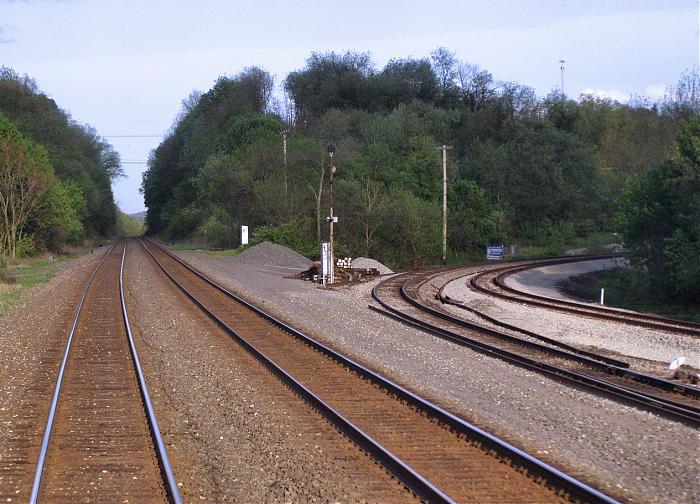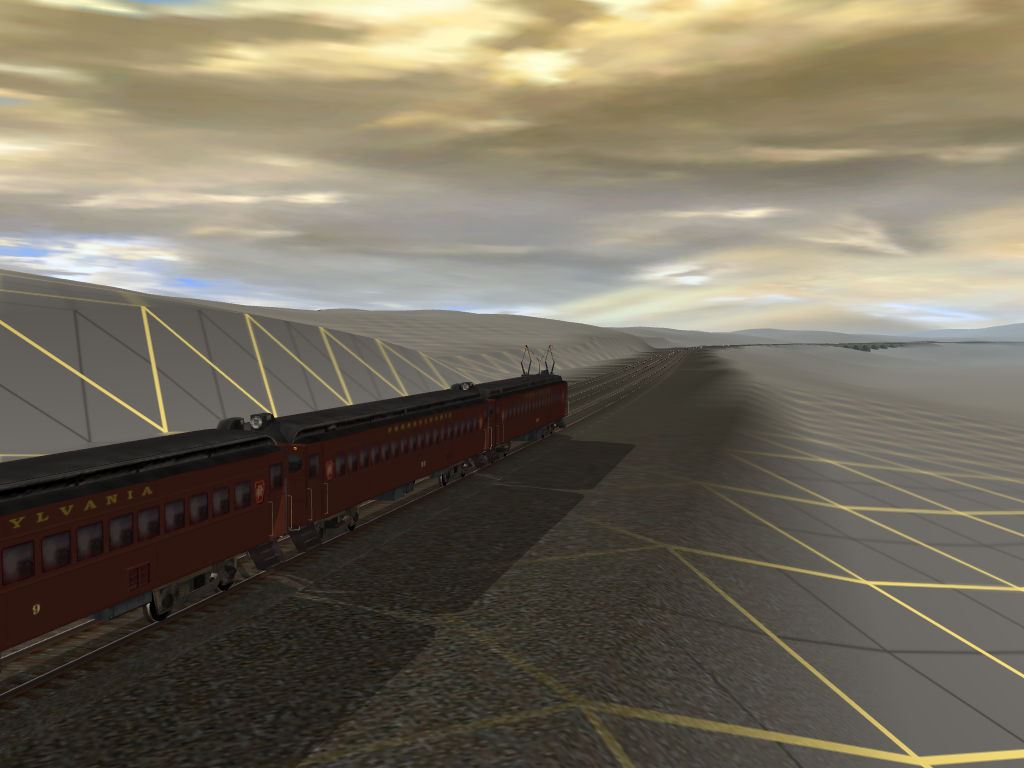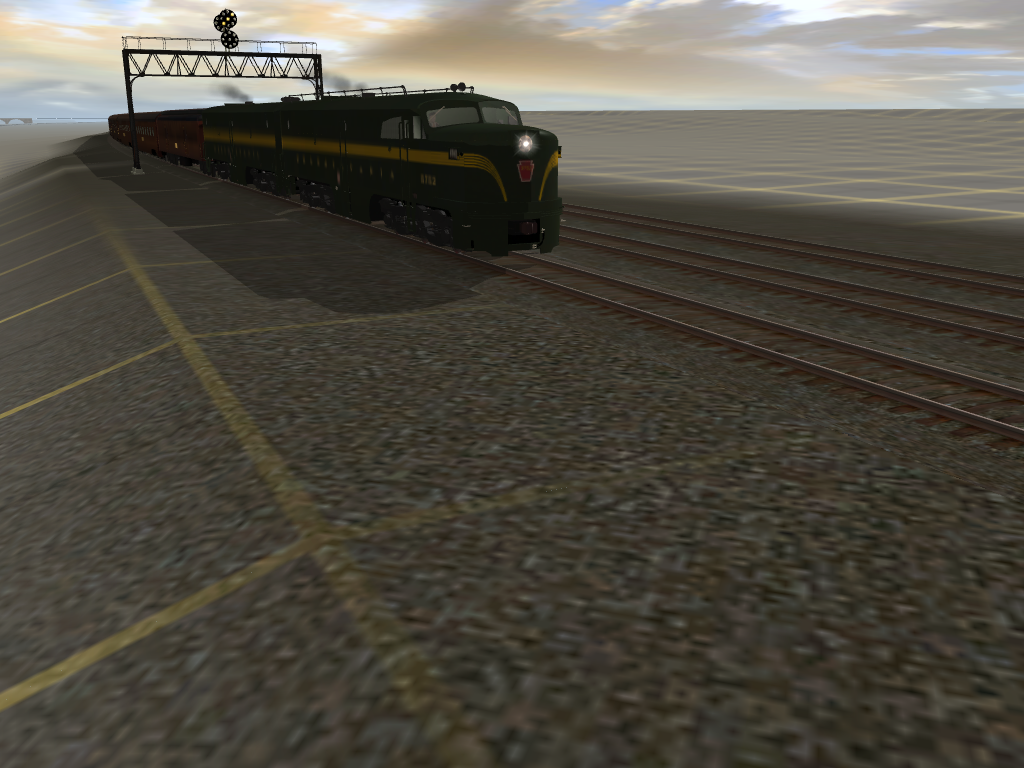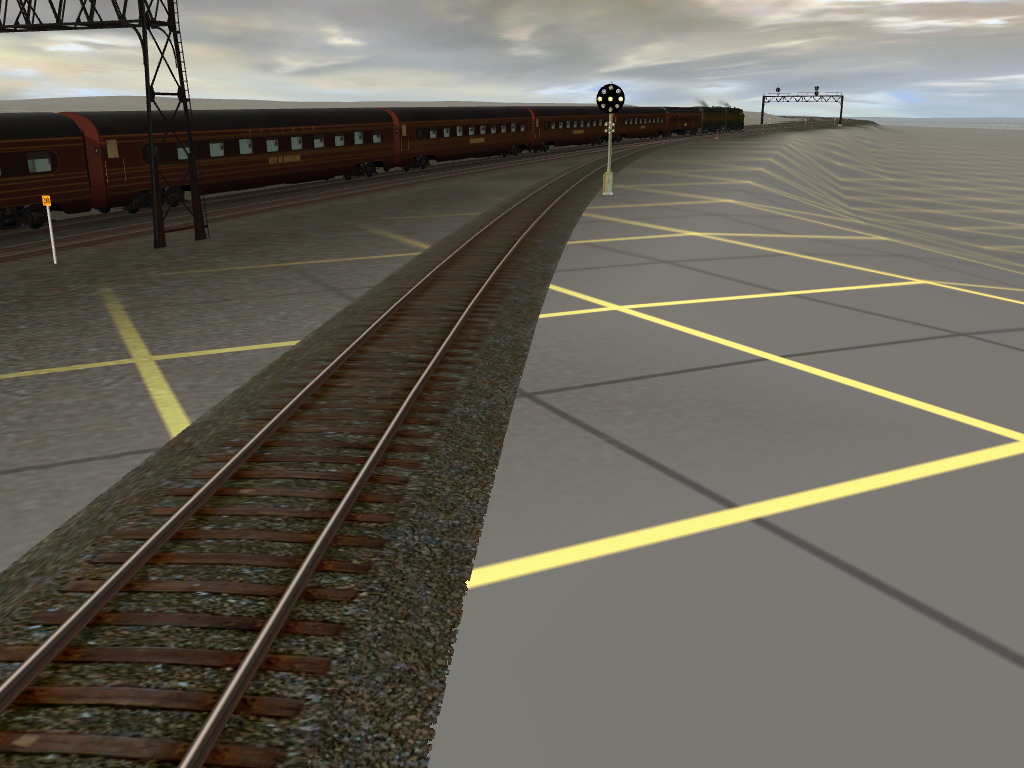cascaderailroad
New member
Radebaugh Tunnel



The Radebaugh name first began to attract attention out this way when the
PRR was putting in its new mainline in the early 1850s. Mr. Radebaugh, a
local farmer, had his place sitting just where the railroad wanted to run
their tracks. He wanted none of it. He felt things were fine as they were,
and had no need for a railroad. In the grand old style of the PRR, Mr.
Radebaugh was railroaded as were hundreds [probably thousands] of other
landowners who got in the way of the PRR. The immense financial and legal
leverage that the railroad could bring to bear was rarely resisted
successfully.
Despite the railroads enormous power to threaten, frighten, buy, or
otherwise get people out of their way, they would on occasion come upon an
obstacle that would not yield to their seemingly unstoppable momentum. West
of Greensburg they came upon one of these obstacles that, unlike Mr.
Radebaugh, could not be bought off, frightened, or taken to court. This was
in the shape of a formidable land mass. It was not about to yield to the
PRRs threats. They had to find other means to deal with this monster. A
tunnel was decided upon. This tunnel did not go straight through the big
hill, but wound over to the right [north] to avoid the worst part of the
hill; in this way they made the tunnel a bit shorter. Due to this, the
original mainline was not a straight shot west out of Greensburg on its way
to Jeannette, which incidentally was not there yet. The original mainline
had a jog in it around the big hill, through old Radebaugh tunnel. This
tunnel soon became a bottleneck for mainline traffic as the volume of
shipping increased. It became a problem never really solved until the mid
1960s.
I can recall finding that tunnel one day in the 1970s. I and a young lady
from Seton Hill had decided to take a walk out the mainline west on a nice
spring day to see what we could find. At a point just about 1 miles west
on the mainline from the Greensburg RR station, we saw to our right, in
against the hillside, an old boarded-up tunnel. The tracks no longer led to
it; it remained a mystery for me for quite a while. Well, I was probably
dealing with other issues then, so it is not surprising that it took me a
number of years to realize that we had found the old Radebaugh tunnel, the
route by which the PRR,s original mainline made its way west.
As mentioned earlier, this tunnel was really a bottleneck for mainline
traffic. The width made it impossible to lay additional tracks when traffic
volume picked up as local coal mines began shipping more and more of their
product, and shipping on the PRR in general increased. In the late 1890s,
an effort was made to solve this problem. Another tunnel was decided upon.
This time it would be a straight shot through the big hill that had seemed
so formidable in the 1850s. Since then, better methods of tunneling had
been developed. So about 1898, the mainline west of Greensburg began going
through this new Radebaugh tunnel. It was used in combination with the old
Radebaugh tunnel. But even that did not totally solve the problem. In the
mid 1960s, the railroad decided to daylight the new Radebaugh tunnel,
making it a cut instead of a tunnel.. Improved earth-moving equipment had
made this possible. The overburden of earth on top of the tunnel was
removed, and the tunnel dismantled. Some vestiges of the old tunnel are
still there to be seen if anyone should be brave enough to try a walk
through the cut there. I dont recommend that venture though.
A westbound freight with a dead unit had been laboring upgrade toward the old tunnel. As the train rounded the curve, the engineer immediately realized that something was amiss as his headlight hit a solid wall of dust in the tunnel. Fortunately, he was able to stop, back out and report the incident. The cave-in unraveled the whole tunnel back toward the entrances.
The hill above the tunnel had been the site of mining operations. A story says, that gypsy miner had gotten into the old mine just above the tunnel. He apparently dug too deep into one of the pillars supporting the mine tunnel. This resulted in the collapse of the mine tunnel which then propagated into the collapse of the railroad's tunnel.
In the late 70's early 80's the hill that the tunnel bored thru was strip mined....and the old tunnel was gone forever.
The two-track Greensburg New Tunnel that was daylighted in 1965 as it was an operational bottleneck on the PRR Main Line.



The Radebaugh name first began to attract attention out this way when the
PRR was putting in its new mainline in the early 1850s. Mr. Radebaugh, a
local farmer, had his place sitting just where the railroad wanted to run
their tracks. He wanted none of it. He felt things were fine as they were,
and had no need for a railroad. In the grand old style of the PRR, Mr.
Radebaugh was railroaded as were hundreds [probably thousands] of other
landowners who got in the way of the PRR. The immense financial and legal
leverage that the railroad could bring to bear was rarely resisted
successfully.
Despite the railroads enormous power to threaten, frighten, buy, or
otherwise get people out of their way, they would on occasion come upon an
obstacle that would not yield to their seemingly unstoppable momentum. West
of Greensburg they came upon one of these obstacles that, unlike Mr.
Radebaugh, could not be bought off, frightened, or taken to court. This was
in the shape of a formidable land mass. It was not about to yield to the
PRRs threats. They had to find other means to deal with this monster. A
tunnel was decided upon. This tunnel did not go straight through the big
hill, but wound over to the right [north] to avoid the worst part of the
hill; in this way they made the tunnel a bit shorter. Due to this, the
original mainline was not a straight shot west out of Greensburg on its way
to Jeannette, which incidentally was not there yet. The original mainline
had a jog in it around the big hill, through old Radebaugh tunnel. This
tunnel soon became a bottleneck for mainline traffic as the volume of
shipping increased. It became a problem never really solved until the mid
1960s.
I can recall finding that tunnel one day in the 1970s. I and a young lady
from Seton Hill had decided to take a walk out the mainline west on a nice
spring day to see what we could find. At a point just about 1 miles west
on the mainline from the Greensburg RR station, we saw to our right, in
against the hillside, an old boarded-up tunnel. The tracks no longer led to
it; it remained a mystery for me for quite a while. Well, I was probably
dealing with other issues then, so it is not surprising that it took me a
number of years to realize that we had found the old Radebaugh tunnel, the
route by which the PRR,s original mainline made its way west.
As mentioned earlier, this tunnel was really a bottleneck for mainline
traffic. The width made it impossible to lay additional tracks when traffic
volume picked up as local coal mines began shipping more and more of their
product, and shipping on the PRR in general increased. In the late 1890s,
an effort was made to solve this problem. Another tunnel was decided upon.
This time it would be a straight shot through the big hill that had seemed
so formidable in the 1850s. Since then, better methods of tunneling had
been developed. So about 1898, the mainline west of Greensburg began going
through this new Radebaugh tunnel. It was used in combination with the old
Radebaugh tunnel. But even that did not totally solve the problem. In the
mid 1960s, the railroad decided to daylight the new Radebaugh tunnel,
making it a cut instead of a tunnel.. Improved earth-moving equipment had
made this possible. The overburden of earth on top of the tunnel was
removed, and the tunnel dismantled. Some vestiges of the old tunnel are
still there to be seen if anyone should be brave enough to try a walk
through the cut there. I dont recommend that venture though.
A westbound freight with a dead unit had been laboring upgrade toward the old tunnel. As the train rounded the curve, the engineer immediately realized that something was amiss as his headlight hit a solid wall of dust in the tunnel. Fortunately, he was able to stop, back out and report the incident. The cave-in unraveled the whole tunnel back toward the entrances.
The hill above the tunnel had been the site of mining operations. A story says, that gypsy miner had gotten into the old mine just above the tunnel. He apparently dug too deep into one of the pillars supporting the mine tunnel. This resulted in the collapse of the mine tunnel which then propagated into the collapse of the railroad's tunnel.
In the late 70's early 80's the hill that the tunnel bored thru was strip mined....and the old tunnel was gone forever.
The two-track Greensburg New Tunnel that was daylighted in 1965 as it was an operational bottleneck on the PRR Main Line.

















